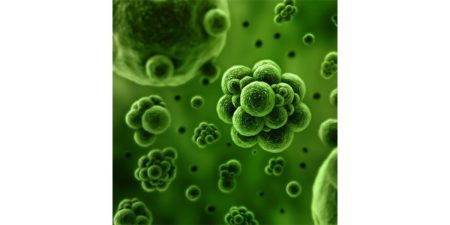An old antibiotic called nourseothricin may be useful against germs that are drug-resistant, according to recent studies. James Kirby and his colleagues at Harvard Medical School in the United States completed the study, and the results were released in the Plos Biology journal.
Nourseothricin is a naturally occurring substance produced by a soil fungus that contains many variations of the complex chemical streptothricin, according to a statement from Kirby’s team.

The Old Antibiotic
The discovery of nourseothricin in the 1940s raised expectations for it as a potent agent against gram-negative (drug-resistant) bacteria, which are notoriously difficult to eradicate with conventional antibiotics due to their thick outer protective shell. The development of nourseothricin was abandoned because it proved harmful to the kidneys.
The streptothricins were not completely purified in early investigations of the product. Recent studies have found that the toxicities of various forms vary, with streptothricin-F being much less toxic while still being quite effective against modern multidrug-resistant infections.
Study at Harvard Medical School
James Kirby of Harvard Medical School in America and colleagues decided to take another look at nourseothricin since the prevalence of bacterial diseases that are resistant to antibiotics has sparked a quest for novel medicines.
Researchers in the current study described the kidney toxicity, antibacterial activity, and mode of action of two distinct streptothricins, D and F, in highly pure forms. By attaching to a bacterial ribosome component and inducing translational mistakes, Streptothricin-F, the less toxic variant of nourseothricin, exhibits strong efficacy against gram-negative bacteria, offering a novel strategy for treating such illnesses.
The D form, however, proved more effective than the F form against drug-resistant Enterobacterales and other bacterial species, a wide collection of diverse forms of germs (bacteria) that frequently cause infections in hospital settings.

Researchers discovered streptothricin-F had a strong affinity for a component of the bacterial ribosome, which produces proteins for bacteria through a process known as translation. This explains why certain medicines are known to cause translational mistakes in the microorganisms they are intended to treat.
It may be useful when other known translation inhibitors are ineffective since the binding relationship is unique from that of those substances.
Old is Gold
This finding could indicate a fresh approach to battling dangerous and challenging-to-treat illnesses.
Dr. Kirby said that, based on unique, promising activity, they believe the streptothricin scaffold deserves further pre-clinical exploration as a potential therapeutic for the treatment of multidrug-resistant, gram-negative pathogens. They found that it is activity potent as well as highly active the strongest contemporary multidrug-resistant pathogens and works by a unique mechanism to inhibition protein synthesis.
A Shining Silver line in the Horzion
The senior vice president of informatics and clinical content at the drug database FDB (First Databank), Joan Kapusnik-Uner, PharmD, told Medical News Today that reviewing or resurrecting older pharmacological molecules is a workable method. She believes that because to improvements in purification and synthesis techniques as well as the adoption of other dosage strategies or routes of administration, drugs can now function more effectively.

According to Kapusnik-Uner, antibiotics are seldom reintroduced since their usage in clinical practise has declined over time owing to the emergence of bacterial resistance or because the danger of side effects is too great when compared to other accessible options.
Streptomycin, one of the earliest antibiotics used against TB and later for other gram-negative bacterial infections, was cited by the speaker as an illustration of this. Bacterial resistance led to the end of its therapeutic usefulness. When combination medicines, such as penicillin and streptomycin, were suggested for use in regimens to treat severe gram-positive bacterial infections such enterococcal heart valve infection, this medication had a resurgence.













